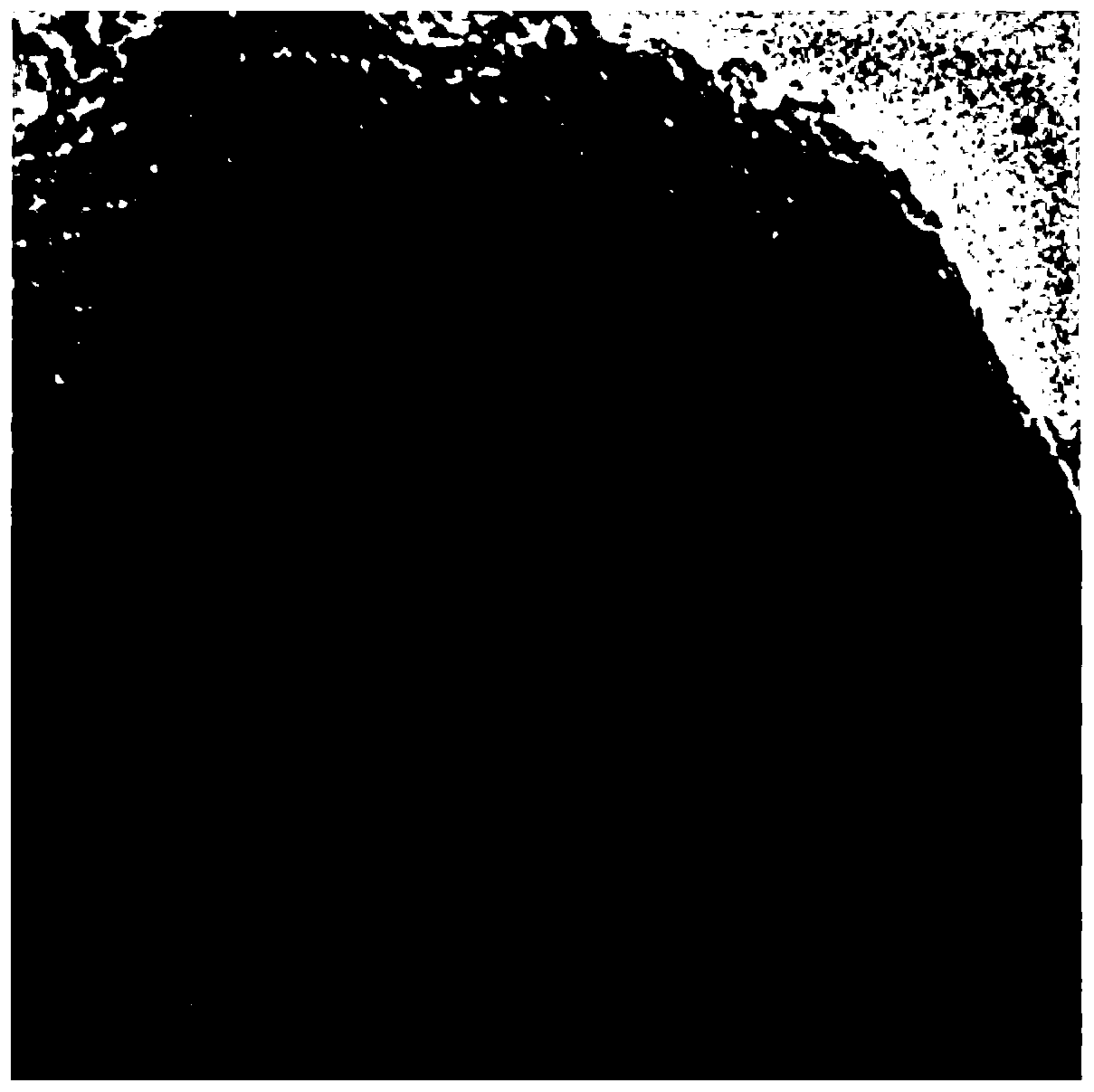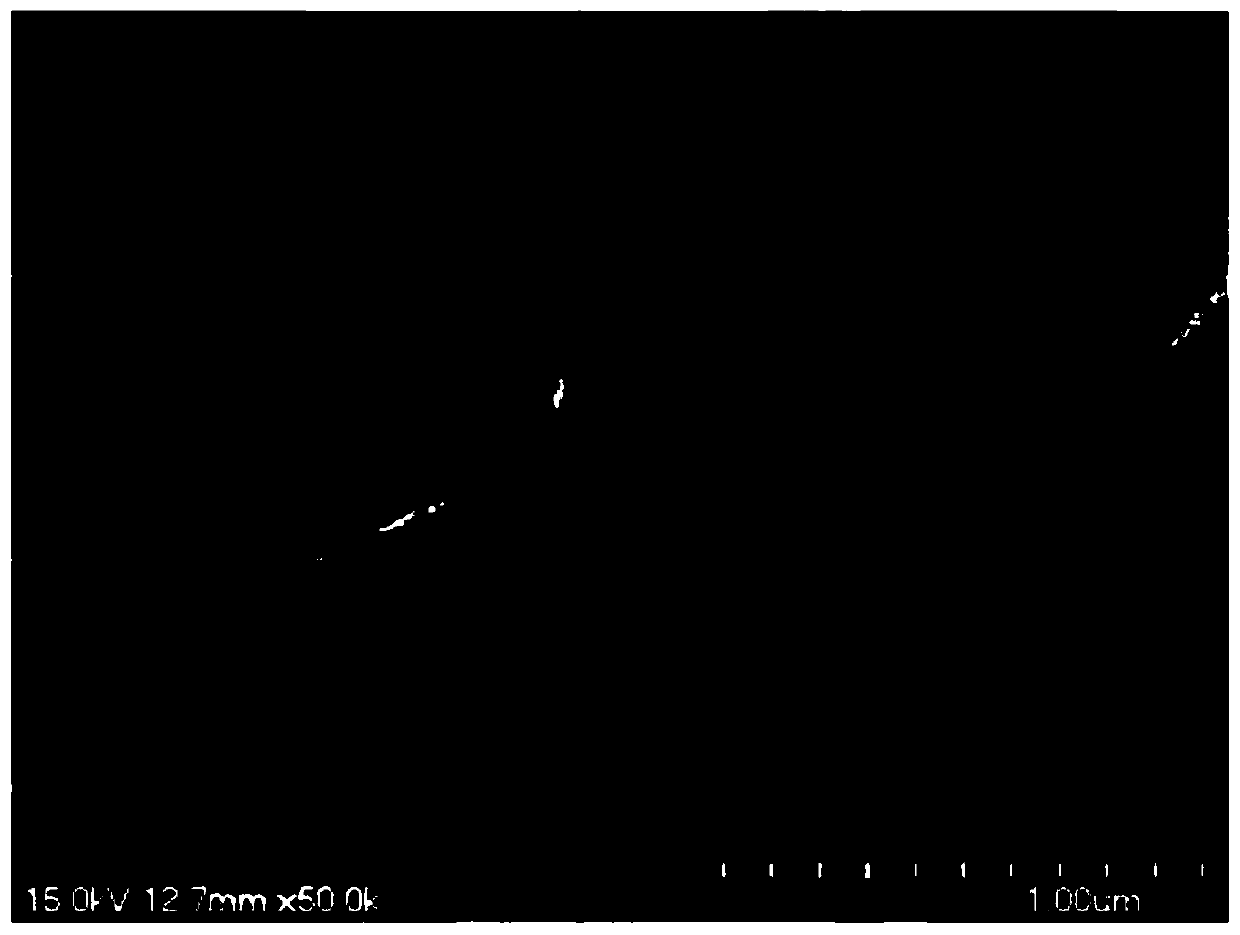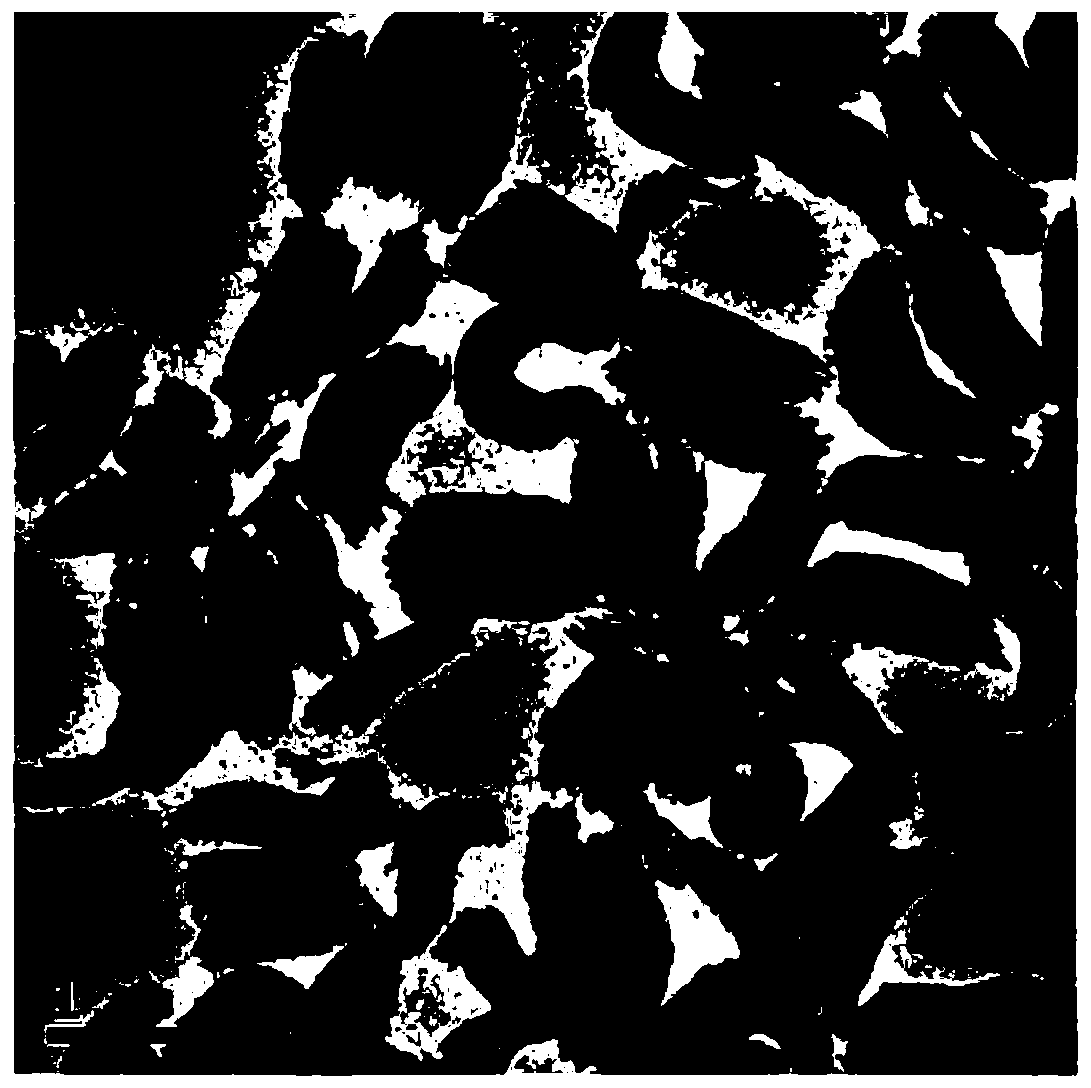Platinum-ruthenium bimetal loaded zirconia nanotube composite material and preparation method thereof and application in low-temperature thermocatalytic treatment of toluene
A bimetallic nanocomposite material technology, applied in the field of nanocomposite materials, can solve problems such as complex preparation methods, and achieve the effect of good repeatability, controllable structure and large specific surface area
- Summary
- Abstract
- Description
- Claims
- Application Information
AI Technical Summary
Problems solved by technology
Method used
Image
Examples
Embodiment 1
[0034] The preparation of embodiment one zirconia nanotubes, concrete steps are as follows:
[0035] 4g polyethylene oxide-polypropylene oxide-polyethylene oxide triblock copolymer (P 123 ), 130ml of ultrapure water and 20ml of concentrated hydrochloric acid (37wt%) were fully stirred evenly, then slowly added 8.32g of tetraethyl orthosilicate, and stirred in a water bath at 38°C for 24 hours. Hydrothermal reaction at ℃ for 24 hours, naturally cooled to room temperature, suction-filtered and washed until neutral, dried at 80℃, after drying, placed in a 1L flask with 120ml concentrated nitric acid and 40ml hydrogen peroxide, and refluxed at 80℃ for 3h , cooling and suction filtration, washing with ultrapure water and ethanol several times until neutral, and drying at 50°C to obtain the product SBA-15-OH.
[0036] Stir and dissolve 0.5g of SBA-15-OH and 3ml of hydrochloric acid (1.07mol / l) at 50°C, then add 0.4695g of zirconium oxychloride octahydrate for sealed aging, first at...
Embodiment 2
[0038] Example 2 The preparation of a zirconia nanotube composite material loaded with platinum and ruthenium bimetallic nanoparticles, the specific steps are as follows:
[0039]The aqueous solution of 100mg zirconia nanotube and chloroplatinic acid, ruthenium trichloride (the molar ratio of chloroplatinic acid, ruthenium trichloride is 7: 3, and the molar sum of chloroplatinic acid, ruthenium trichloride is zirconia molar weight 1% of ) mixed, stirred under ultrasonic for 2h, then stirred and evaporated to remove the solvent, the temperature was 80 ℃; then the product was subjected to reduction treatment, carried out in a hydrogen atmosphere, the heating rate was 1 ℃ / min (room temperature to 400 ℃), the temperature is 400 ℃, and the time is 5h. Through calcination, the zirconia nanotube composite material loaded with platinum and ruthenium bimetallic nanoparticles with large specific surface area and uniform distribution of nanoparticles is obtained, in which platinum rutheni...
Embodiment 3
[0043] The thermocatalytic conditions of the zirconia nanotube composite material loaded with platinum and ruthenium bimetallic nanoparticles to toluene gas are: the concentration of toluene is 50 ppm, the amount of catalyst is 50 mg, and the catalyst is fixed in a fixed bed reactor through a U-shaped tube Above, the catalytic effect of the composite on toluene gas under heating conditions was analyzed by gas chromatography.
[0044] attached Figure 7 A graph showing the thermocatalytic effect of zirconia nanotube composites loaded with platinum and ruthenium bimetallic nanoparticles on toluene gas. attached by Figure 7 It can be seen that the present invention can be applied to the conversion of toluene at lower temperatures. Toluene pollution in the air mainly comes from building materials, interior decoration materials, living and office supplies, outdoor industrial waste gas, automobile exhaust, photochemical smog, etc. The specific catalytic effect of toluene is analy...
PUM
 Login to View More
Login to View More Abstract
Description
Claims
Application Information
 Login to View More
Login to View More - R&D
- Intellectual Property
- Life Sciences
- Materials
- Tech Scout
- Unparalleled Data Quality
- Higher Quality Content
- 60% Fewer Hallucinations
Browse by: Latest US Patents, China's latest patents, Technical Efficacy Thesaurus, Application Domain, Technology Topic, Popular Technical Reports.
© 2025 PatSnap. All rights reserved.Legal|Privacy policy|Modern Slavery Act Transparency Statement|Sitemap|About US| Contact US: help@patsnap.com



